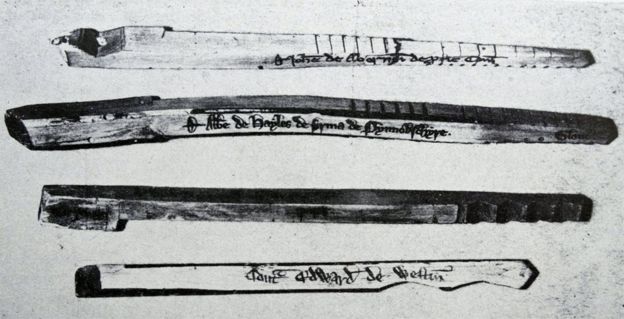The Oxford's Ashmolean Museum, home to art and antiquities from around the world. Some people often find themselfs slipping down the stairs to the money gallery in its grand basement.
You can see coins from Rome, the Vikings, the Abbasid Caliphate and, closer to home, from medieval Oxfordshire and Somerset. But while it seems obvious that the money gallery would be full of coins, most money isn't in the form of coins at all.The trouble is, as Felix Martin points out in his book, Money: The Unauthorised Biography, that most of our monetary history hasn't survived in a form that could grace a museum.
In fact, in 1834, the British government decided to destroy 600 years of precious monetary artefacts. It was a decision that was to have unfortunate consequences in more ways than one.
The artefacts in question were humble sticks of willow, about eight inches (20cm) long, called Exchequer tallies. The willow was harvested along the banks of the Thames, not far from the Palace of Westminster in central London.
Foils and stocks
Tallies were a way of recording debts with a system that was sublimely simple and effective.
The stick would contain a record of the debt, for example: "£9 4s 4d from Fulk Basset for the farm of Wycombe". Fulk Basset was a Bishop of London in the 13th Century. He owed his debt to King Henry III.
Now comes the elegant part. The stick would be split in half, down its length from one end to the other. The debtor would retain half, called the "foil". The creditor would retain the other half, called the "stock" - even today, British bankers use the word "stocks" to refer to debts of the British government. Because willow has a natural and distinctive grain, the two halves would match only each other.
 Image copyright Alamy
Image copyright Alamy
If you had a tally stock showing that Bishop Basset owed you £5, then unless you worried that he wasn't good for the money, the tally stock itself was worth close to £5 in its own right.
If you wanted to buy something, you might well find that the seller would be pleased to accept the tally stock as a safe and convenient form of payment.
So the tally sticks themselves became a kind of money, a particular sort of debt that could be traded freely, circulating from person to person until it utterly separated from Bishop Basset and a farm in Wycombe.

Keine Kommentare:
Kommentar veröffentlichen